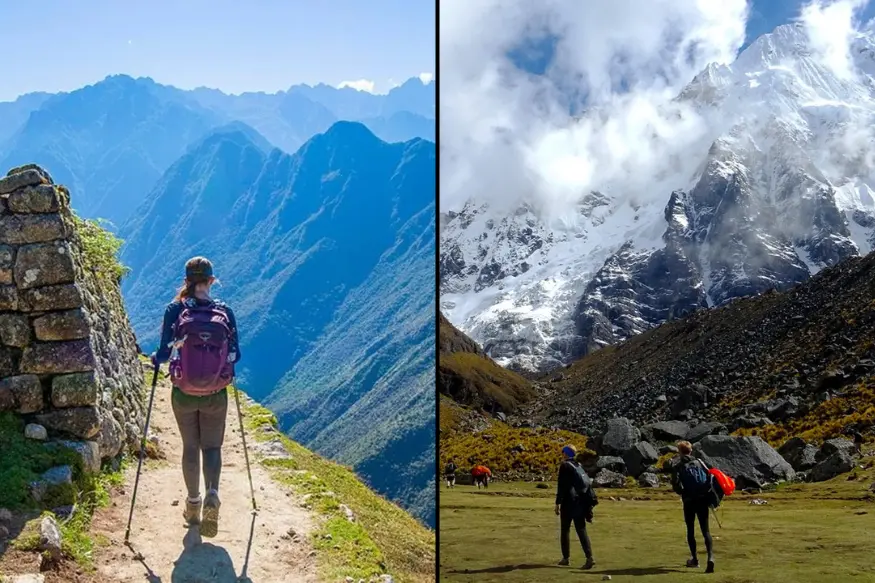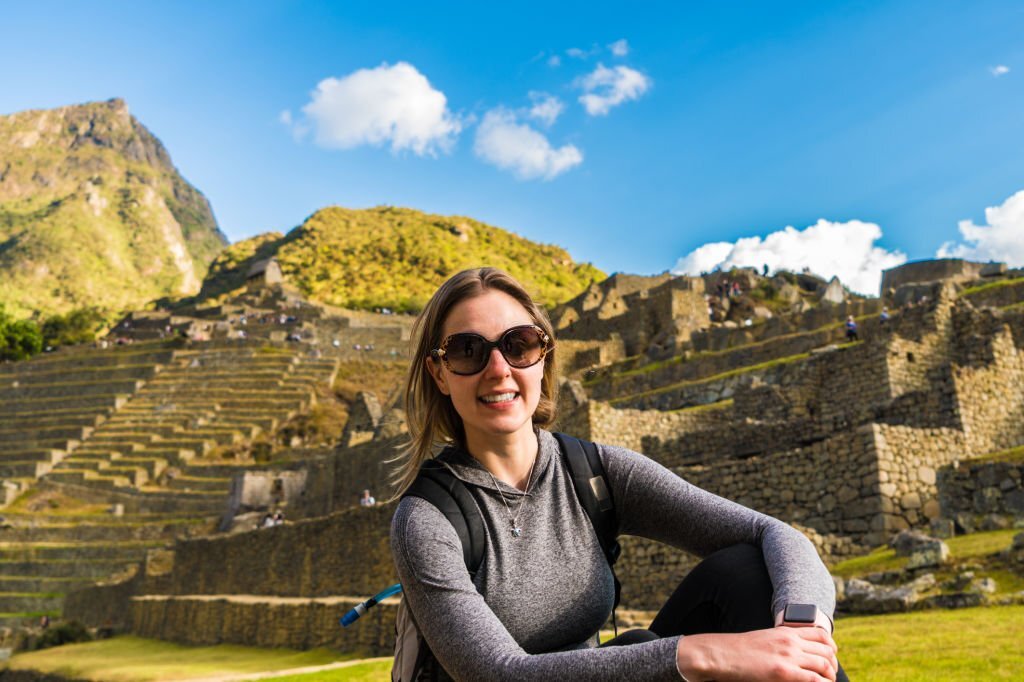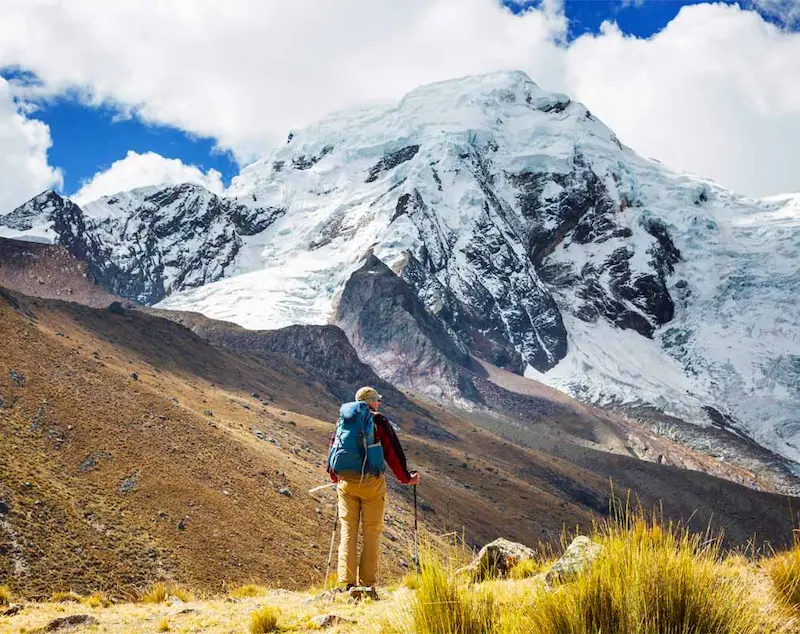
Inca Trail vs Salkantay Trek: Which One Should You Choose?
Table of Contents
Planning a trek to Machu Picchu but unsure whether to choose the famous Inca Trail or the scenic Salkantay Trek? You’re not alone. Thousands of travelers ask the same question every year: Inca Trail vs Salkantay Trek — which one is better? The answer depends on your priorities: history, scenery, challenge level, flexibility, or cost.
This in-depth comparison will guide you through all the key differences and help you decide which route fits your adventure style best.
How do the Inca Trail and Salkantay Trek compare in distance and difficulty?
| Feature | Inca Trail | Salkantay Trek |
|---|---|---|
| Total Distance | 26 miles (42 km) | 45 miles (72 km) |
| Typical Duration | 4 days / 3 nights | 5 days / 4 nights |
| Highest Point | 13,828 ft (4,215 m) – Dead Woman’s Pass | 15,190 ft (4,635 m) – Salkantay Pass |
| Difficulty | Moderate to challenging | Challenging due to altitude & length |
The Salkantay Trek is longer and reaches higher altitudes, making it more physically demanding. However, the Inca Trail, while shorter, includes steep stone steps, significant elevation changes, and narrow mountain paths that also present a real challenge.
What kind of landscapes can you expect on each trail?
Inca Trail

This historic route winds through cloud forests, high Andean passes, and multiple Inca ruins. You’ll walk on original Inca stone paths and pass archaeological gems like Runkurakay, Sayacmarca, and Wiñay Wayna. The scenery is breathtaking, but it’s the blend of culture and nature that makes it magical.
Salkantay Trek

The Salkantay route showcases dramatic landscapes that shift from glacial peaks and turquoise alpine lakes to tropical cloud forests. One of the highlights is Humantay Lake, a dazzling blue lagoon framed by snowcapped mountains. As you descend, the lush vegetation and waterfalls contrast with the rugged start of the trek.
If you prioritize varied natural scenery, Salkantay wins. If you want cultural immersion and ancient ruins, Inca Trail is your route.
Which trek offers more cultural and archaeological value?
Inca Trail: A walk through living history
The Inca Trail is the original pilgrimage route to Machu Picchu. Along the way, you’ll pass more than half a dozen Inca archaeological sites, many only accessible on foot. Your final approach to Machu Picchu is through Inti Punku (Sun Gate) — the same route the Incas once used. For lovers of history and archaeology, this is unmatched.
Salkantay Trek: Local culture and rural life
While the Salkantay Trek does not feature as many Inca ruins, it provides rich interaction with the Andean way of life. You’ll meet local farmers and shepherds in small highland villages, and some itineraries include a visit to the Llactapata ruins, which offer a distant view of Machu Picchu.
In summary, Inca Trail is the better choice for archaeology and historical storytelling, while Salkantay offers deeper insight into rural Peru.
How much does each trek cost, and how available are they?
Inca Trail: Limited permits, higher cost
Because of its popularity and protected status, the Inca Trail requires a government-issued permit. These permits often sell out 4–6 months in advance, especially during the dry season. Prices generally range from $600 to $1,000 USD depending on the operator and inclusions.
Salkantay Trek: No permits, more affordable
The Salkantay route does not require permits, which means greater flexibility in booking. It’s also more budget-friendly, with most tours ranging between $450 and $750 USD. You’ll still get guide service, meals, and Machu Picchu entry included in that price.
So, if you’re booking last-minute or traveling on a tighter budget, the Salkantay Trek is your best bet.
What about comfort — camping or lodges?
Inca Trail
Accommodation along the Inca Trail is camping only. Tents, sleeping bags, and dining tents are provided by the tour operator. Porters carry most of the heavy equipment and even cook for you. However, bathroom facilities are basic, and hot showers are rare.
Salkantay Trek
This trail has more lodging variety. Besides camping, many tour operators now offer comfortable lodges, eco-domes, or even glass sky pods perched on cliffs. If you prefer not to rough it, some versions of the Salkantay Trek allow you to hike all day and then sleep in a proper bed.
If comfort matters, Salkantay Trek gives you more options.
How do you finish each trek at Machu Picchu?
Inca Trail
One of the biggest draws of the Inca Trail is its arrival at Machu Picchu through the Sun Gate (Inti Punku). You enter the site on foot at sunrise — a magical moment that few other visitors get to experience.
Salkantay Trek
You end the Salkantay Trek in Aguas Calientes, from where you take a bus or hike to Machu Picchu the next morning. The approach is less dramatic than the Sun Gate arrival but still offers a fulfilling reward after five days of trekking.
So, if you dream of seeing Machu Picchu appear through the mountains at dawn, Inca Trail delivers that cinematic moment.
What’s the best option for altitude acclimatization?
Both treks require proper acclimatization, as they go above 4,000 meters. However:
Salkantay’s highest pass (4,635 m) is higher than the Inca Trail’s (4,215 m), and the ascent is steeper.
Spend at least 2–3 days in Cusco or the Sacred Valley before beginning either trek to reduce the risk of altitude sickness.
For travelers especially sensitive to altitude, the Inca Trail may be slightly gentler.
Inca Trail vs Salkantay Trek: Which one is more crowded?
Inca Trail
The Inca Trail allows a maximum of 500 people per day (including porters and guides). Permits are limited and regulated strictly, but the trail can still feel busy during peak season.
Salkantay Trek
There is no daily limit on trekkers, and the route is far less trafficked. You’re more likely to walk long stretches without seeing anyone, especially in the early days of the hike.
If solitude is important, Salkantay is much less crowded.
Summary: Key differences at a glance
| Category | Inca Trail | Salkantay Trek |
|---|---|---|
| Scenery | Inca ruins, cloud forests, mountains | Glaciers, lakes, jungle, cloud forests |
| Cultural Value | High – archaeological sites | Moderate – local villages |
| Permit Required | Yes (book months in advance) | No permit needed |
| Cost | Higher ($600–$1000) | Lower ($450–$750) |
| Comfort | Camping only | Camping + lodges or domes |
| Crowds | Popular and regulated | Less crowded and more flexible |
| Ending Point | Sun Gate (walk into Machu Picchu) | Aguas Calientes, then bus to site |
Final Verdict: Inca Trail vs Salkantay Trek — Which one is better?
There’s no one-size-fits-all answer. Both treks offer unforgettable experiences, and the best one depends on what matters most to you.
Choose the Inca Trail if you:
Are passionate about history and archaeology.
Want to enter Machu Picchu through the Sun Gate.
Don’t mind planning 4–6 months ahead.
Value a fully guided, structured trek.
Choose the Salkantay Trek if you:
Crave stunning, diverse landscapes.
Are planning last-minute or on a tighter budget.
Prefer a quieter trail with fewer tourists.
Want a more comfortable trekking experience.
Whichever trail you choose, both lead to the Lost City of the Incas — Machu Picchu, and each route will challenge you, inspire you, and stay with you long after you’ve returned home.
Are you ready to live one of the most incredible experiences on the planet?
Machu Picchu is not only a wonder of the world, it is a journey that transforms your soul.
Machu Picchu Tickets, makes your dream of seeing the sacred city of the Incas come true with tours carefully designed for all styles of travelers. Whether you’re looking for an epic hike along the Inca Trail, a scenic train tour or a private getaway, we have the perfect trip for you.
Normally booked 60 days in advance.


